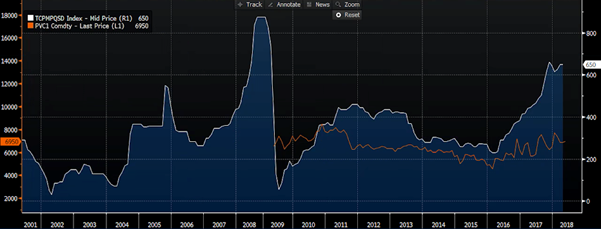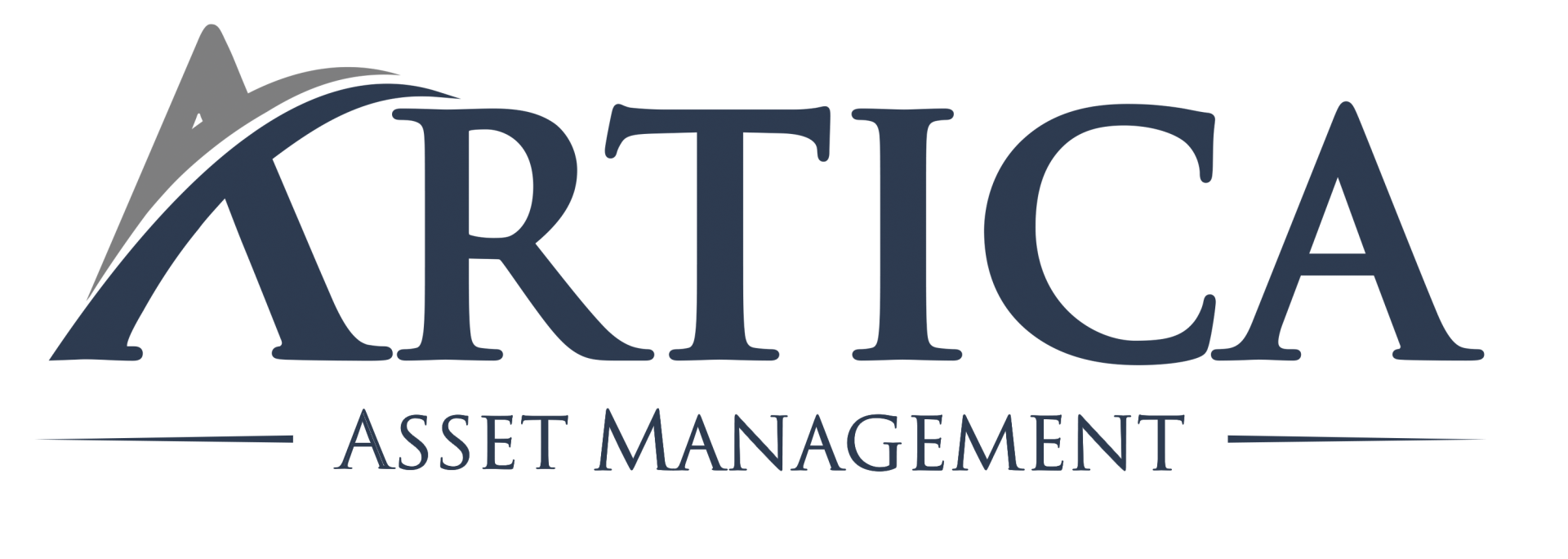Dear investors,
We had a few months with a very busy market. Given the period of uncertainty and anguish, we dedicate our last letters to aspects that are more appropriate for that moment, such as investments in times of crisis and historical return on shares vs. fixed income in several countries (including Brazil). For those who haven't read it yet, all these letters are posted on our website.
This month, we decided to share our investment case at Unipar Carbocloro.
Unipar represented Arcadia's largest position in the 2015-19 period, and was our first 20-bagger (it provided a return equal to 20x invested capital!), as detailed in the chart below.
Graph 1 – Historical Return of UNIP6 [1]

Next, we detail our investment process in the company, from the identification of the opportunity, through the decision to purchase and, recently, the decision to sell. Currently, we no longer have the company in the background.
Founded in 1969, Unipar Carbocloro is a company dedicated to the petrochemical segment. Currently, the company has operations focused on three segments: chlorine, soda (it is the largest producer in Latin America) and PVC (second largest producer).
For the few who remember high school chemistry classes, Unipar's production process is clear. The company uses salt (NaCl), water (H2O) and electricity as its main raw materials, and transforms them into chlorine (Cl2) and caustic soda (NaOH).
Chlorine has several applications in the industrial sector, including the production of PVC (manufacture of pipes for plumbing), water and sewage treatment, agricultural pesticides, pulp and paper, among others. Chlorine can also be used for the production of explosives, which gives the product two characteristics that make Unipar's business attractive: (1) due to the risk of explosion, chlorine cannot be transported over long distances, and (2) for this application, there is a need for a multitude of licenses for a company to be qualified to produce chlorine (and consequently, soda) – significant entry barriers.
These characteristics give the industry a characteristic of a natural monopoly and make the business very profitable. Unipar has plants in the cities of Santo André (SP) and Cubatão (SP), and thus manages to serve the South and Southeast regions, where the largest consumers in the country are located.
As soda and chlorine are normally produced together, the soda market also has the same entry barriers. The main difference is that, because soda is not explosive, it can be transported over long stretches and, therefore, the company also faces global competition and the prices practiced by Unipar follow those of the global market.
Focusing on these 3 segments is something recent for the company. Historically, the company operated as a holding company with stakes in companies with different operations in the petrochemical sector and even held a stake in a wind turbine blade company (Tecsis), which is currently in RJ. The table below illustrates the corporate tangle that made up Unipar in 2006:
Graph 2 – Unipar's organizational structure in 2006

Between 2006 and 2010, a series of transactions took place aimed at simplifying the company's corporate structure and focusing on the most profitable business (Carbocloro). The transactions were: sale of Petroflex (2007); sale of União Terminais (sold to Grupo Ultra in 2008); and Quattor (a company that included Unipar's stake in Petroquímica União, Rio Polímeros, Poliethylenes União), Polibutenos and Unipar Comercial (sold to Braskem in 2010).
The complex history of corporate restructuring made the analysis difficult and made the company potentially misunderstood by the market.
In 2013, Unipar acquired the remaining 50% in Carbocloro (until then, its stake was 50%) and became a company whose only asset was Carbocloro – a structure similar to the one that exists today. [two]
This transaction caught our attention because the terms of the deal presented a great disparity when compared to the market value of Unipar itself, since Unipar's main asset at that time was 50% of interest in Carbocloro and the offer made to buy the remaining 50% was 20 -30% higher than Unipar's stock market value! As the two halves of the same asset obviously should have the same value, the offer made it clear that Unipar executives believed that its operations were significantly undervalued on the stock exchange.
So we decided to deepen our analysis.
It made little sense to evaluate the financial history of the Unipar holding, as it contained several operations that were sold during the restructurings, so the accounting result did not reflect the business perspective for the future. As shown in the chart below, an analysis that captured only Unipar's results (and not Carbocloro's) would be ineffective in analyzing the company.
Graph 3 - Historical normalized net income (Unipar x Carbocloro)

The important thing was to analyze Carbocloro. As Unipar provided little information about Carbocloro, we sought operational and financial history information from alternative sources, such as balance sheets published in the Official Gazette. We recover information from the 80's!
The findings were quite encouraging, as they showed typical characteristics of good businesses: stable volumes, high margins and high cash conversion, typical of businesses with few competitors and high barriers to entry.
The chart below shows Carbocloro's net income and return on equity (ROE) at the time of the analysis. It should be noted that the company had never recorded a year of loss, even in the worst crises such as in 2002-2003.
Graph 4 – Carbocloro's historical net income and ROE

A negative point for the company was the lack of growth: the company's net income had not shown significant growth since 2001. We understand that there were two factors that were weighing against the company: (1) the idle capacity of the industry was close to historical maximums , closely linked to the beginning of the crisis we had in the Dilma government; (2) soda prices were low in the international market, which, together with a weakened dollar, contributed to a lower than “normal” profit. This conclusion, in a way, was comforting, because even in a downturn in the cycle, the company was still profitable and cash generating.
As for the valuation, our estimates at the time were that, under conservative scenarios, the company actually looked pretty discounted. Based on the level of cash generation, we estimated that the company should be worth at least twice what it was valued on the stock exchange – even with the CDI at the time, which was around 12% a year!
After considering everything, we made the decision to invest, starting purchases at the end of 2014.
Despite the high return that the action provided, we had to be very patient and disciplined. That's because we started buying in Aug/14 and, in just over 6 months, the shares had dropped by around 25% (compared to a drop of 12% on the Ibovespa in the period)! Undoubtedly, a less than encouraging start for the position.
A drop of this magnitude justified a detailed review of the investment to assess whether we had made a mistake or whether relevant changes had occurred in the company or in the market that would justify such a drop in value.
We found that, in fact, the company's operating results continued to even better than our expectations, so the fall in the shares seemed to be driven only by a market fear that macro factors could contaminate the company's results (the moment coincided with the peak of the crisis that culminated in the impeachment in 2016).
Our conclusion was that the decline did not seem reasonable and we took it as an opportunity to continue buying at an even lower price. We built the position over a period of 18 months, during which the price remained attractive, as shown in the chart below.
Graph 5 – UNIP6 share price [3] compared to purchase volume

In this same period, the company's controller, aware of the discounted price of the share, made a purchase offer to go private at R$ 1.79/share [4] (premium of 15% over the price at the time). Fortunately, we were able to coordinate with other minority shareholders and veto the proposed purchase at this amount.
As of 2016, the stock began to provide good returns. Three factors contributed to the improvement in results and, consequently, in share prices.
The first was the company's own performance, which benefited from the increase in the dollar, had a cash generation of almost R$ 500m in a period of 3 years (between 2014-16) - a value higher than the market value at the time of our investment, and higher than what we had estimated for the period. This cash generation was used to reduce net debt (which dropped from R$ 580m to R$ 188m in the period), and the remainder was paid to shareholders in the form of dividends.
The second factor was a move made by the company in 2016 to acquire Solvay Indupa. A competitor with operations in Brazil and Argentina and presence in the Soda, Chlorine and PVC segments. Solvay Indupa had already been for sale for some years and, taking advantage of the lack of buyers (there was a sale process for Braskem in 2014 stopped by antitrust bodies), Unipar managed to acquire the asset at a good price. After a well-executed turnaround, Indupa became a cash generating unit and allowed for a considerable expansion in Unipar's results.
The third factor that influenced Unipar's results was the increase in the price of soda in the international market, as can be seen in the chart below. This increase was largely due to environmental issues, which prohibited the production of chlorine and soda using old technology and forced several factories around the world to stop production. Europe was the first region to impose this restriction, in 2017, which eliminated a significant part of the global supply and raised commodity prices. Other factors also contributed, such as growing demand from China and the fact that US chlorine and soda plants are already operating close to the limits of their production capacity.
Graph 6 - Historical price of caustic soda (white goods)

It is important to point out that Unipar itself is expected to replace its mercury plant in the coming years, which will require significant investment.
Due to these factors, between 2015 and 2018, the company increased its net income 6 times and the share appreciated 20 times. In early 2019, due to how much the share appreciated and how much the price of soda had also risen, we made the decision to sell our Unipar shares, to invest in other businesses with greater potential for appreciation. We are still following the action closely, waiting for the day when a new buying opportunity at attractive prices will arise.
[1] UNIP6 prices shown in charts are adjusted for dividends and stock splits [2] For completeness there were two more transactions not mentioned. The first was the acquisition of a 25,25% stake in Tecsis (a wind blade production company) in 2011 and the second was the purchase of Indupa in 2016 (detailed in the text) [3] UNIP6 prices shown in the charts are adjusted to dividends and stock splits [4] The original OPA price was R$ 4.40/UNIP6 share; the price presented in the text was adjusted considering dividends and stock splits

